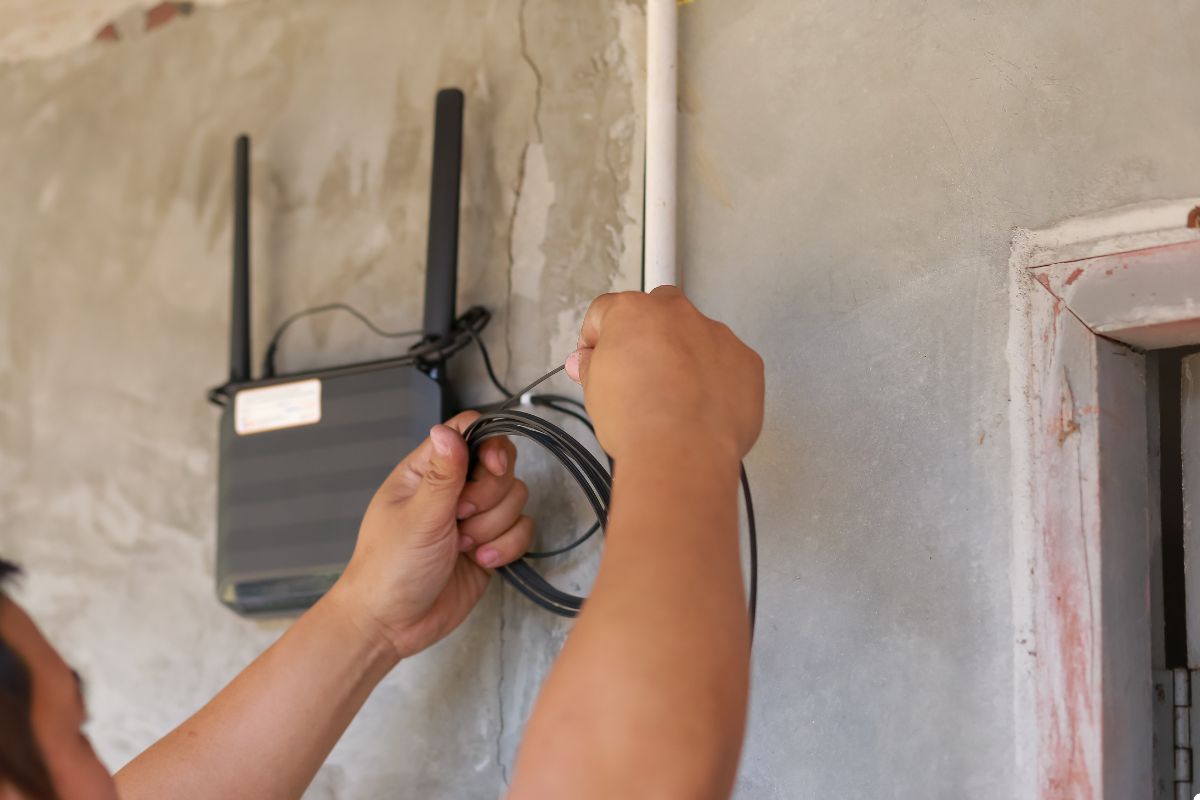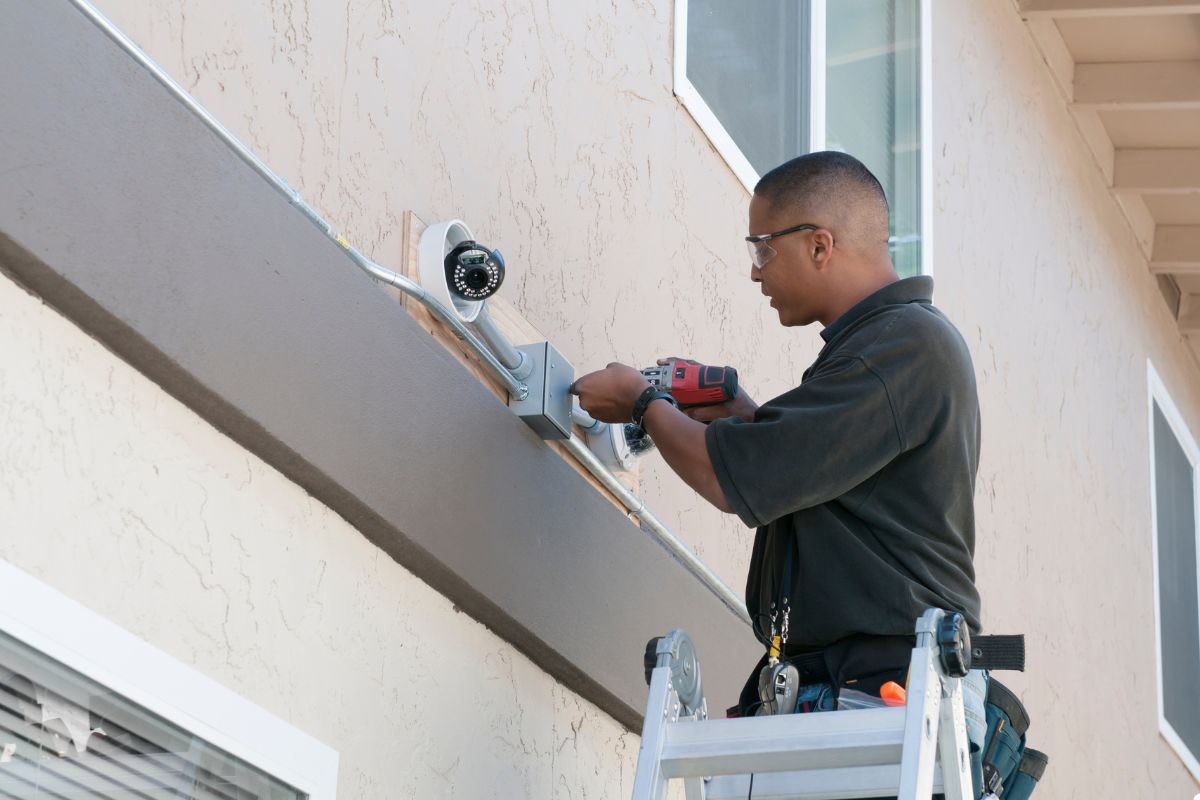
The easiest home security system to install in 2025 is generally considered to be a wireless, DIY system like SimpliSafe, Ring Alarm, or Abode. These systems are designed for user-friendly setup, with pre-programmed sensors, easy-to-follow instructions, and mobile app control, allowing you to protect your home without professional installation. Let’s delve deeper into why DIY security is booming and how to choose the best option for your needs. Call us today for expert advice and assistance in choosing the perfect home security system for you!
Why DIY Home Security is Gaining Popularity
More and more homeowners across the United States are turning to DIY home security systems, and for good reason. The biggest driver is cost savings. Professional installation can add hundreds of dollars to the overall price of a security system. With DIY options, you eliminate these fees and control your budget.
Another key factor is ease of installation. Modern DIY systems are designed to be intuitive and straightforward. Most components are wireless, eliminating the need for drilling or running wires. Installation typically involves simply mounting sensors and connecting the base station to your Wi-Fi network. Explore our home automation services to enhance your security and convenience today!
Finally, DIY systems offer flexibility and control. You can customize the system to fit your specific needs and easily add or remove components as your requirements change. This control, coupled with affordability, makes a compelling case.

Assessing Your Home Security Needs
Before selecting the best home security system for your needs, it’s essential to assess your property by focusing on three key areas: entry points, potential blind spots, and areas that may require extra monitoring for complete peace of mind:
- Identifying Entry Points: Note all doors and windows, especially those on the ground floor or easily accessible from the outside. These are your primary points of vulnerability.
- Evaluating Vulnerabilities: Consider factors like landscaping that could provide cover for intruders, areas with poor lighting, or unsecured outbuildings.
- Considering Your Lifestyle: Think about your daily routine. Do you have pets? Do you often leave your home unattended for extended periods? Do you want to integrate your security system with smart home devices? Your lifestyle influences the type of protection you need.
Top Contenders: Easiest DIY Home Security Systems of 2025
Several DIY home security systems stand out for their ease of installation and user-friendliness. Here are three of the top contenders:
- SimpliSafe: SimpliSafe is known for its simple setup, affordable monitoring plans, and wide range of sensors and accessories. Its pre-programmed sensors and straightforward installation process make it a popular choice for beginners. You can find lots of positive online to see if it aligns with your needs.
- Ring Alarm: Ring Alarm, from Amazon, integrates seamlessly with other Ring devices, such as video doorbells and security cameras. It offers easy installation and affordable professional monitoring options. It’s also an attractive option for those already invested in the Amazon ecosystem.
- Abode: Abode offers a more customizable and advanced DIY security experience. It supports a wider range of smart home integrations and provides more granular control over your system. While slightly more complex than SimpliSafe or Ring, its flexibility makes it a strong choice for tech-savvy users.
Installing Your Chosen System: A General Overview
While each system has its specific instructions, the general process for installing a DIY home security system is similar:
- Unboxing and Inventory: Carefully unpack all components and verify that everything is included. Read the installation manual thoroughly.
- Positioning Sensors: Place sensors on doors and windows, following the manufacturer’s instructions. Ensure they are securely mounted and properly aligned.
- Connecting the Base Station: Connect the base station to your Wi-Fi network and power outlet. Follow the on-screen prompts to configure the system.
- Mobile App Setup: Download the mobile app to easily manage your system on the go. Learn more about our services to maximize your security and control!
Troubleshooting Common Installation Issues
Even with easy-to-install systems, you might encounter some hiccups. Here are common problems and how to solve them:
- Sensor Connectivity Issues: Ensure sensors are within range of the base station. Check the batteries and replace them if necessary. Re-pair the sensor with the base station if needed.
- Wi-Fi Problems: Verify your Wi-Fi connection is stable and strong. Move the base station closer to your router if necessary.
- Mobile App Glitches: Ensure you have the latest version of the app. Clear the app’s cache and data. Restart your phone. Contact customer support if the problem persists.

Understanding the Costs of DIY Home Security
The cost of a DIY home security system varies depending on the brand, the number of sensors, and the monitoring plan you choose.
- Equipment Costs: Expect to pay anywhere from $100 to $500 for the initial equipment, depending on the size and complexity of your system.
- Monitoring Costs: Many DIY systems offer optional professional monitoring plans, which typically range from $10 to $30 per month.
- Hidden Fees: Be sure to watch out for potential hidden fees, such as cancellation charges, equipment replacement costs, or additional fees for adding extra users to your account when choosing the best smart home security system. Always read the fine print before committing to any service.
Key Features for a User-Friendly System
To ensure a truly easy and effective DIY home security experience, look for these key features:
- Wireless Connectivity: Wireless sensors and components eliminate the need for complex wiring and make installation a breeze.
- Mobile App Control: A user-friendly mobile app allows you to arm and disarm the system, monitor sensor activity, and receive alerts from anywhere.
- Professional Monitoring Options: While self-monitoring is an option, professional monitoring provides an extra layer of security by alerting authorities in case of an emergency.
- Customization Options: Customize your security system to fit your unique needs with ease. Contact us today to get started and create the perfect solution for your home!
Frequently Asked Questions (FAQs)
Is it really easy to install these systems myself?
Yes, most DIY systems are designed for easy installation. However, some technical aptitude may be helpful.
Do I need special tools to install a DIY home security system?
Typically, you’ll only need basic tools like a screwdriver and perhaps a drill for mounting some sensors.
What happens if my Wi-Fi goes down?
Many systems have cellular backup, allowing them to continue functioning even without Wi-Fi.
Can I move my DIY home security system to a new house?
Yes, most DIY systems are portable and can be easily moved to a new location.
Do I need a contract with a DIY home security company?
Most DIY systems don’t require a long-term contract, offering more flexibility.
What is the difference between self-monitoring and professional monitoring?
Self-monitoring means you receive alerts and are responsible for contacting authorities. Professional monitoring means a monitoring center handles that for you.
Are these systems compatible with smart home devices like Alexa or Google Assistant?
Many DIY systems offer smart home integration. Check compatibility before purchasing.
How much does professional monitoring typically cost?
Professional monitoring typically ranges from $10 to $30 per month.
What happens if my alarm goes off?
If you have professional monitoring, the monitoring center will attempt to contact you and dispatch emergency services if needed.
Are these systems pet-friendly?
Yes, many systems offer pet-sensitive sensors that minimize false alarms.
Securing Your Home the Easy Way: A Recap
Choosing an easy-to-install DIY home security system is a smart way to protect your property and loved ones without breaking the bank. By understanding your needs, selecting the right system, and following the installation instructions carefully, you can enjoy peace of mind knowing your home is secure. Take control of your safety and experience the benefits today! For assistance or more information, call us.
